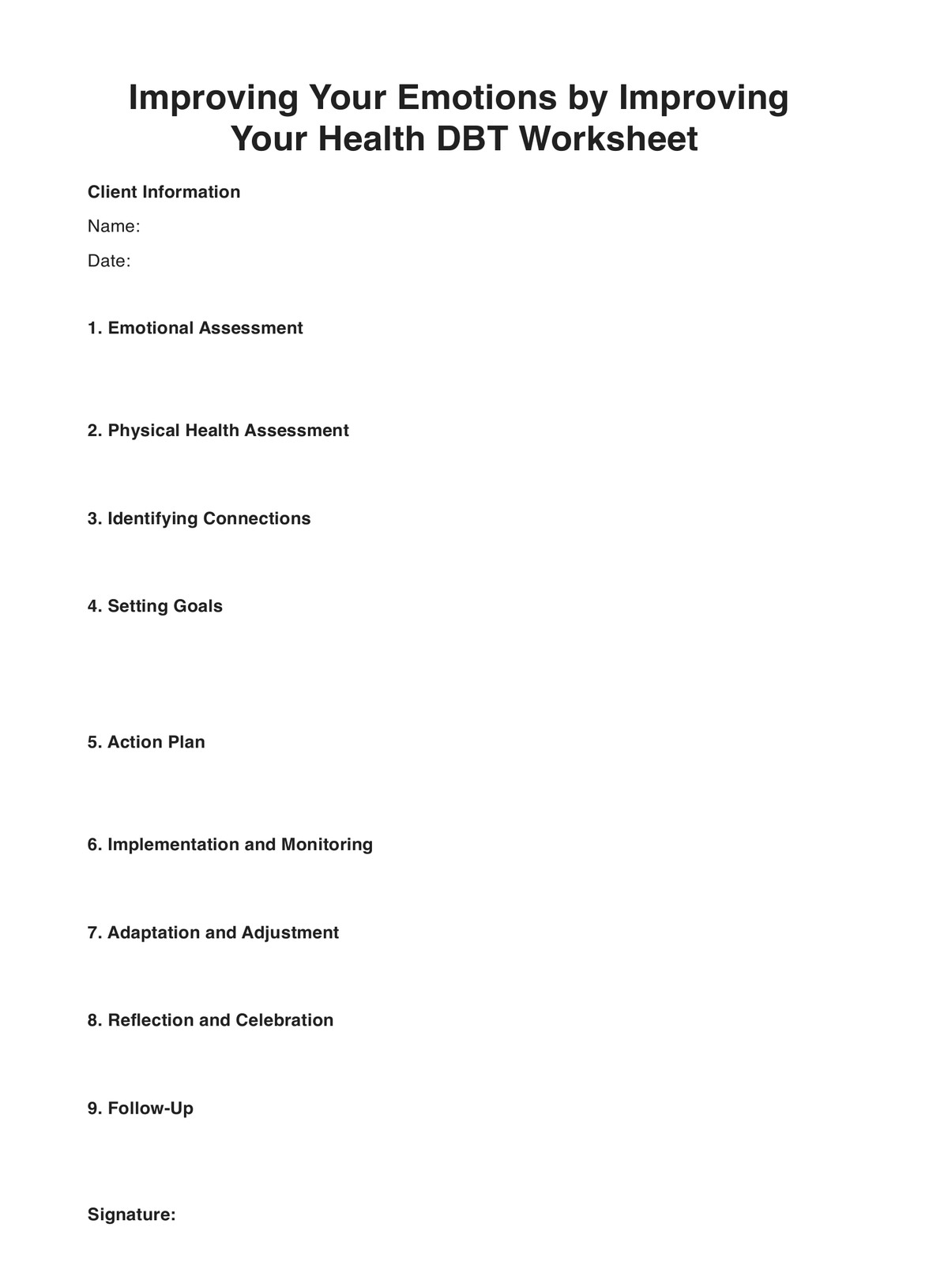The time it takes to complete the worksheet varies based on individual engagement and thoroughness. Generally, it can be completed within 30 minutes to an hour, allowing for thoughtful self-assessment and goal-setting.

Improving Your Emotions by Improving Your Health DBT Worksheet
Enhance well-being with the Improving Your Emotions by Improving Your Health DBT Worksheet. A structured approach to emotional balance.
Improving Your Emotions by Improving Your Health DBT Worksheet Template
Commonly asked questions
This worksheet offers a structured approach to enhancing emotional well-being by addressing physical health. It guides individuals in recognizing connections between emotions and health habits, setting actionable goals, and fostering improved emotional regulation.
This worksheet is practical during emotional turbulence, when seeking to make lifestyle changes, when starting therapy, or during wellness check-ins. It's beneficial whenever individuals aim to align emotional and physical well-being.
EHR and practice management software
Get started for free
*No credit card required
Free
$0/usd
Unlimited clients
Telehealth
1GB of storage
Client portal text
Automated billing and online payments











